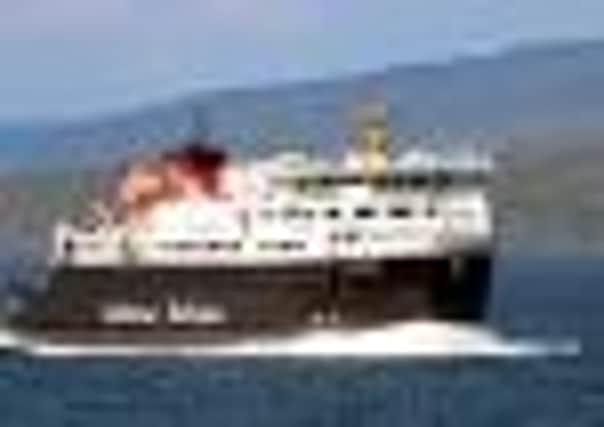Skye fights subsidy cut to lifeline car ferry


The route between Mallaig and Armadale in south-east Skye is used by up to 220,000 travellers a year, bringing jobs and income to both the mainland around the fishing town and the island’s remote Sleat peninsula.
But a reduction in government subsidies for the popular summer service – run by Caledonian MacBrayne (CalMac) – is under consideration as part of the Government’s wide-ranging review of Scotland’s ferry network, which is due to conclude at the end of this month.
Advertisement
Hide AdAdvertisement
Hide AdCampaigners say the ferry is the “lifeblood” of their community and have been angered by comments in a government draft report which states that “the ferry service is now mainly about providing tourists with the opportunity to travel via Skye and the mainland in a different way from the road connection”.
It wants other commercial operators to bid for the route to drive subsidy costs down.
But residents and local businesses fear that a cut in subsidies could lead to a loss of visitors to the area and a reduction in services if prices rise and tourists decide to abandon the ferry crossing for the free Skye bridge route further north.
One of the campaign leaders, Councillor Allan Henderson, provost of Lochaber and whose ward covers Mallaig, said: “We need to return everyone’s focus on the threat of reducing the summer subsidy. The proposal spells danger. If you alter one part of the service it will ruin the economics of the west coast.”
Part of the problem is the success of the service which has enjoyed a 30 per cent increase in fare-paying passengers – from 168,000 to 220,000 – in the past eight years.
The route is popular among travellers who want to avoid the 70-mile trip north involved in driving to the bridge from Fort William rather than taking the scenic 43-mile Road to the Isles west, which ends at the fishing port of Mallaig.
The only other car ferry from the mainland is the community owned Glenelg-Kylerhea ferry, the only remaining manually operated turntable ferry in Scotland, but which can only take around three cars at a time and is at the end of a long stretch of twisting minor roads.
The Mallaig-Armadale service passenger figures have risen even though a single fare for a car with two passengers is now £31.30 and a single passenger fare is £4.35. The bridge crossing over the Kyle of Lochalsh has been free since tolls were abolished in 2004. But the government is concerned that it is still paying out around £60m a year to subsidise CalMac fares even on routes – such as Mallaig-Armadale – where demand is high.
Advertisement
Hide AdAdvertisement
Hide AdMartin Carty, who has run the Moorings guest house in Mallaig with his wife Jennifer for the past 15 years, said: “This area relies pretty much on the tourist trade. If the prices went up those on the trail to Skye would go from Oban to Fort William, Spean Bridge, Invergarry to Kyle of Lochalsh and then over to Skye by the bridge.
“If tourists cut out this part of the journey it would leave a huge area, including the Sleat peninsula, devoid of visitors.
“It just doesn’t make sense considering the Scottish Government stated in 2006 that it had set a target for a 50 per cent growth in tourism over ten years. Whatever the subsidy is, the Scottish Government is going to lose out in broken businesses and people going on the dole.”
Christine Jamieson, the marketing manager at Clan Donald in Armadale, who helped co-ordinate a response to the draft report, said the area could ill afford to lose one of its main generators of income.
“Tourism is our lifeblood,” she said. “The buzz word at the moment is ‘connectivity’ and how transport networks merge. But in some ways the draft report makes grandiose statements, but reads like a cost-cutting document.”
Rhoda Grant, the Labour MSP for the Highlands and Islands and spokeswoman for enterprise, energy and tourism, said: “I have no problem with the draft review thinking about tourism, but it needs to look at local communities and how people move about. They have not asked the right questions or examined the connectivity of getting ferries to join up to help the local economy.”
A Transport Scotland spokeswoman said: “The future procurement of services on this route will look for bidders to come forward with proposals that will minimise the subsidy involved for the summer period. This level of subsidy will depend on what comes forward during the tender.”